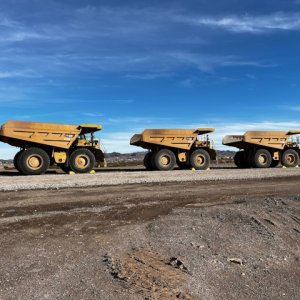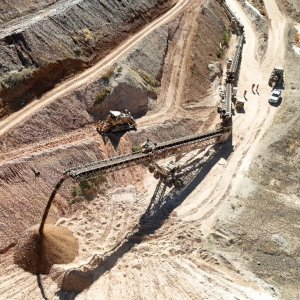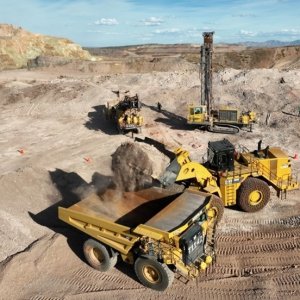Importance of Continued Innovation of Technologies

STORY INLINE POST
With a long history of innovation, Atlas Copco is one of the leaders in product development in the mining industry. After developing the first hydraulic rock drill in the 1970s, the company pioneered the “Swedish method”, consisting of a light weight rock drill with a pneumatic pusher leg. Atlas Copco’s ambitions did not stop there. It has a plan to create a full line of products for autonomous mines by 2020. Many customers in Mexico are using remote controllers developed by the company for some of their applications in order to increase safety and productivity. Automation, autonomous machines, remote monitoring, and continuous mining equipment for hard rock are in demand across the industry. “We have rigs working in many places with different degrees of development,” says Carlos Caicedo, Managing Director of Atlas Copco.
When customers think of Atlas Copco, the product that immediately springs to mind is air compressors, according to Caicedo. However, in the last few years the mining industry has come to know the company for its drilling products. “Drills are key to productivity in the mining industry and our products, like the COP rock drills, are known for delivering the best results,” he boasts. As part of its new Green Line, Atlas Copco also offers an electric loader, and a few mines are already seeing results from this technology. The product can provide savings in fuel, ventilation, and reduce CO2 emissions but the drawback is that mines have to adapt or create new infrastructure to be able to power the loaders. Atlas Copco is currently developing batteryoperated electrical loaders, which means that modification of the mine will no longer be a requirement.
The challenges that underground mining presents are different to open pit developments. For the latter, it is easier to transmit wireless Wi-Fi signals through the air and receive satellite positioning information. “Regarding underground mining, our Rig Control System (RCS) uses the same technological platform for the equipment so most of our rigs have automatic functions that can be integrated for a fully automated operation,” Caicedo explains. “One of the difficulties would be to transmit the information in the mine through kilometers of tunnels then to interface our machines to the mine system. To address this issue we have also developed a project called Mobile Machine Integration alongside ABB.”
Another example of a recently developed product is the EASER, a versatile raise boring machine that Caicedo expects to radically increase productivity in several operations, particularly in Mexico. One of the benefits of the EASER is the dramatic time reduction taken for slot raises in production drilling, and the technology is extremely important for production in deep holes as well as in ventilation shafts. “Current raise boring technology is oversized, difficult to move inside the mine, and involves a lengthy setup process," shares Caicedo. "With the EASER, it will be much easier to mobilize inside the mine and quickly create slot raises. After analyzing the productivity of the equipment and witnessing the quick return companies will recognize the benefits of this investment.”
The company is developing new products based on a control system that can be adapted to work with multiple products. “For several years, we have used our RCS with CAN-Bus technology,” explains Caicedo. “This technology has allowed us to further integrate our products and automatize the systems.” The process of exchanging information is highly important to the mining industry and a compliment to the automatization of products is found in Atlas Copco monitoring systems. These monitoring systems will be easy to use, and receiving the information may be as simple as plugging in a USB drive to transfer the data or receiving real-time information via Wi-Fi. Caicedo expects these systems to benefit mining companies by allowing them to monitor, control, and optimize production, and ultimately increase efficiency.
According to Caicedo, the company’s main differentiator is its focus on maintaining a low operational cost when designing its products. “Whenever we develop a new product its operational costs must be optimized to offer the client the greatest ROI,” he shares. “We analyze costs related to maintenance, production, consumables, and capital, along with excellent customer support to ensure the functionality of the machine.” The company has been servicing the market for more than 140 years and it is known as one of the leaders in innovation and sustainability. In Mexico, Atlas Copco has been established since 1952 and has placed an emphasis on working with customers to integrate feedback into innovation and ultimately increase productivity. “We have recently concluded the building of our new facilities in Zacatecas to support the mining market with some of the most advanced technology we offer,” Caicedo concludes.
























